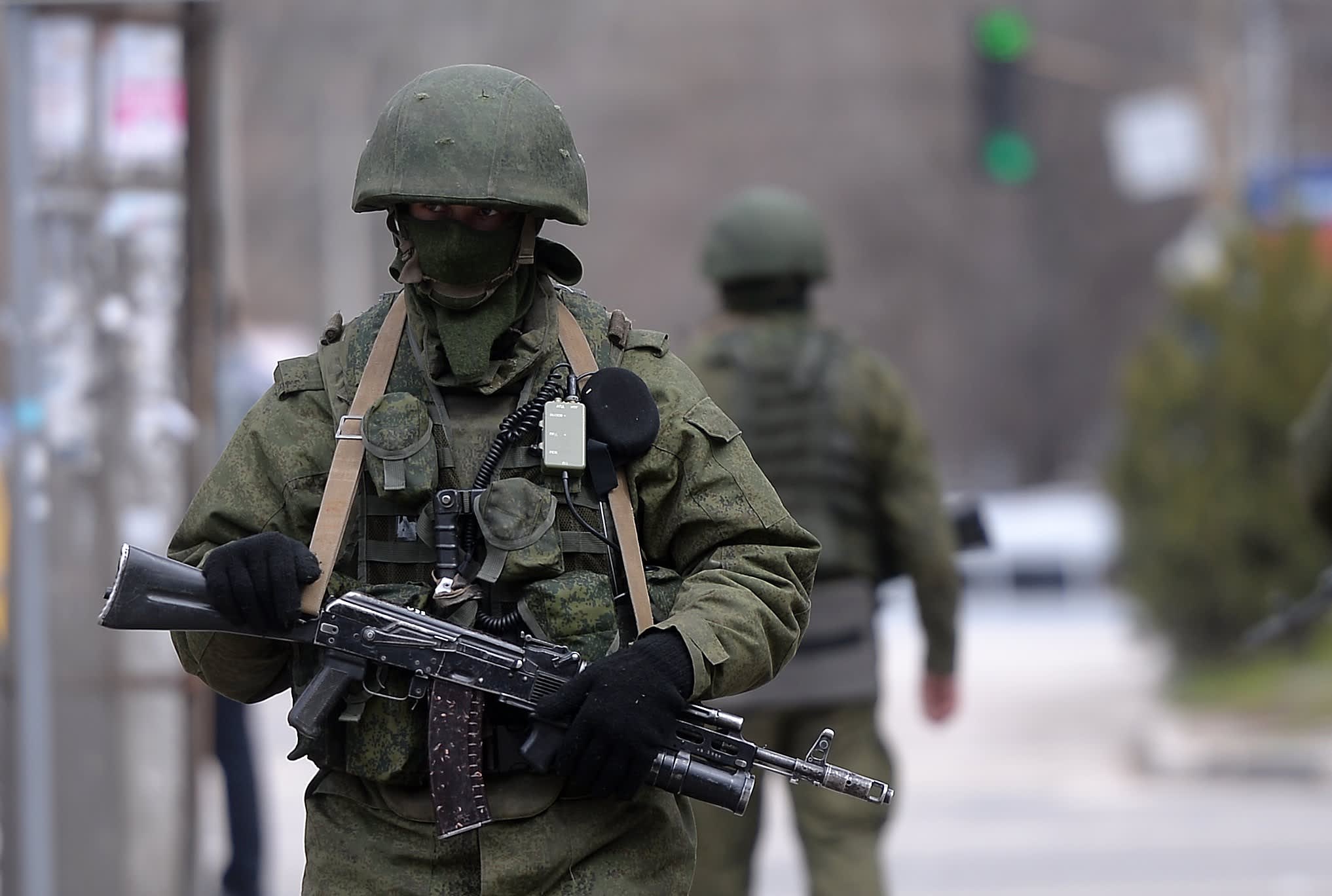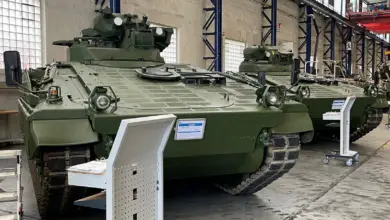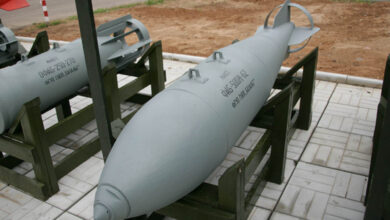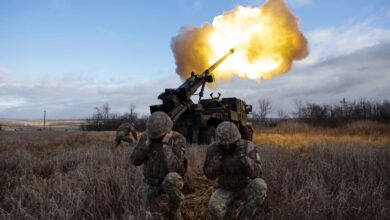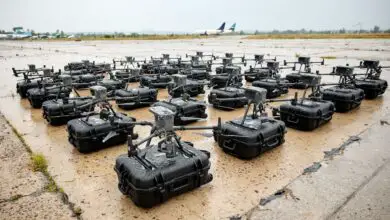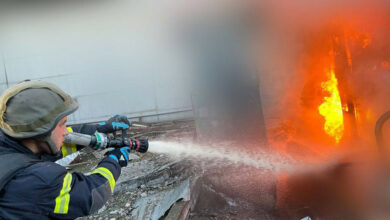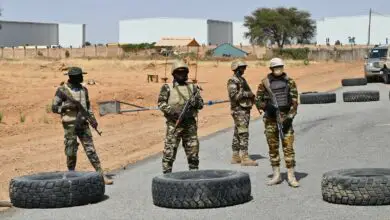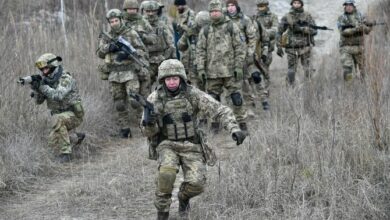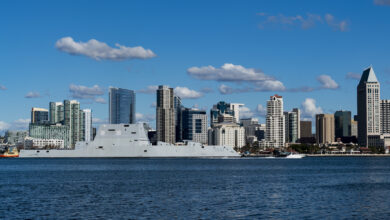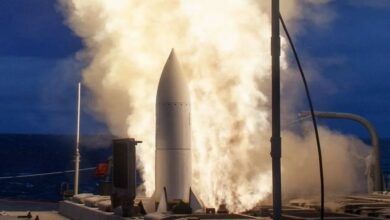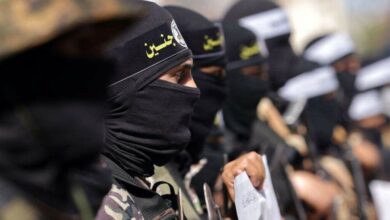Kyiv’s forces were able to damage a bridge that connects southern Ukraine to the annexed Crimean peninsula using British-supplied Storm Shadow cruise missiles, a Russian official said Thursday.
Fighting has increased in occupied parts of Ukraine’s south and east with the start of Kyiv’s counteroffensive and that has included strikes far behind enemy lines.
“During the night a strike hit the Chongar bridge. There are no victims,” Sergei Aksyonov, the Russia-installed governor of Crimea, said on Telegram.
The bridge connects Crimea, which Russia annexed from Ukraine in 2014, to a part of the southern Ukrainian region of Kherson that is partly held by Moscow.
Vladimir Rogov, a Russian-installed official in the southern Ukrainian region of Zaporizhzhia, said a second strike had damaged a disused bridge nearby.
The Kremlin announced last year that Kherson was also part of Russia, even as fighting was raging there. Ukraine recaptured the regional capital shortly after.
The Russia-installed governor of Kherson, Vladimir Saldo, said that Ukrainian strikes had hit “bridges” near the village of Chongar, using the Western-made weapon.
Crimea has been regularly targeted by strikes, mostly using drones, over recent months.
Moscow last year blamed Ukraine for a blast on the main bridge connecting Crimea to the Russian mainland.
‘Blow’ to Russian Logistics
The deputy head of the Kherson regional council said the strike on the Chongar bridge was of “great importance.”
“Firstly, it is a blow to the military logistics of the occupiers,” Yuriy Sobolevskyi said on social media.
“Secondly, the psychological impact on the occupiers and the occupying authorities is even more important.
“There is no place on the territory of Kherson region where they could feel safe,” he added.
Ukrainian military intelligence spokesman Andriy Yusov said “there will be more” attacks targeting Russian-controlled territory.
Prior to Ukraine’s recapture of Kherson last November, its forces repeatedly carried out long-range precision strikes on the nearby key Antonivskyi bridge.
Officials in Kherson said that a 86-year-old woman and a 25-year-old man were seriously injured as a result of Russian shelling.
“Two people were injured as a result of an enemy attack in their own yard,” a statement said.
In recent days, Ukrainian forces have claimed limited gains in a highly touted counter-offensive to win back territory that Russia captured after launching its full-scale offensive in February last year.
In frontline villages taken back from Russians in the eastern Donetsk region, Ukrainian troops appeared to be in full control of roads as they took reporters on a press tour this week.
Signs of Russian occupation were everywhere. The letter “Z” symbolizing Russia’s war was painted on walls of houses and gates.

Russian President Vladimir Putin, who has argued that the Ukrainian counteroffensive is a failure, conceded on Thursday that Kyiv’s forces had “an offensive potential.”
“It must be assumed that this offensive potential of the adversary is not exhausted. A series of strategic reserves are not employed, and I ask that this reality be taken into account,” he said.
Russian Defence Minister Sergei Shoigu said Ukrainian troops were “currently regrouping” after conducting offensive action over the past 16 days.
He added that Western military aid for Ukraine was not seriously impacting outcomes on the battlefield.
Speaking on the sidelines of a conference in London, Ukrainian Prime Minister Denys Shmygal warned that his country’s counteroffensive against Russian forces “will take time” but said he was “optimistic” about its success.
“We have the intention to move and go ahead,” he said.
A ‘Lie’
Separately, the Russian FSB security service said it had detained a group of saboteurs recruited by Ukraine, who were planning attacks on railway infrastructure in the partially occupied Zaporizhzhia region.
The Zaporizhzhia region is home to Europe’s largest nuclear power plant, which has been a flashpoint of fighting and the subject of talks between Russian officials and Kyiv’s allies.
“Intelligence services have received information that Russia is considering the scenario of a terrorist act at the Zaporizhzhia nuclear plant – a terrorist act with the release of radiation,” wrote Ukrainian President Volodymyr Zelensky.
“They have prepared everything for this.”
The Kremlin rejected Zelensky’s assertion that Russian forces could be orchestrating a radiation leak, pointing to a recent visit to the facility by the head of the United Nations’ nuclear agency, the IAEA.
“This is another lie,” Kremlin spokesman Dmitry Peskov said.
Moscow announced that IAEA director general Rafael Grossi would be arriving in the Russian region of Kaliningrad to meet the head of Russia’s nuclear agency.

